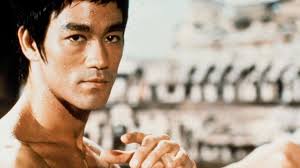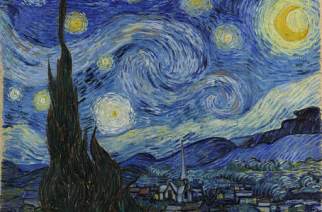Introduction
The formal discipline and training of combat is called “martial arts” and not sports. Why?

- Why are martial arts – where the intent is often to injure, disable or even kill the opponent – regarded as an art?
- What is the difference between a sport and an art?
- As endurance athletes, how would we benefit by “bending” our approach to training and competing more towards art and less towards sport?
- Can we become endurance artists without compromising our athletic performance?
In this introductory Endurance Arts blog, we briefly explore some empowering opportunities by expanding our sports scope to embrace endurance arts.
Join our Endurance Arts Forum here, or scroll to the conclusion of this blog to find out more.
Eyes On the Prize
Let’s compare two scenarios – excerpted from Book One of my “Kaizen-durance, Your Aerobic Path to Mastery” series:
 Athlete Joe Primetime wants to do Ironman next summer. Joe hires a coach and declares, “Coach, I don’t care what it takes! Just get me to that finish line! I want to hear Mike Reilly say “Joe Primetime, you are an IRONMAN!!’” With a locked-and-loaded focus on the result, Joe is going to follow (and maybe exceed) his coach’s step-by-step plan – come hell or high water.
Athlete Joe Primetime wants to do Ironman next summer. Joe hires a coach and declares, “Coach, I don’t care what it takes! Just get me to that finish line! I want to hear Mike Reilly say “Joe Primetime, you are an IRONMAN!!’” With a locked-and-loaded focus on the result, Joe is going to follow (and maybe exceed) his coach’s step-by-step plan – come hell or high water.
 Now let’s look at a different scenario – an artist scenario: Aspiring musician Sabrina Serenade begins to study violin. When she seeks out her teacher, it’s not likely that she will declare “Maestro, I want to play First Violin for Beethoven’s Fifth Symphony at the JFK Symphony Hall next year! I don’t care what it takes, just get me there!”
Now let’s look at a different scenario – an artist scenario: Aspiring musician Sabrina Serenade begins to study violin. When she seeks out her teacher, it’s not likely that she will declare “Maestro, I want to play First Violin for Beethoven’s Fifth Symphony at the JFK Symphony Hall next year! I don’t care what it takes, just get me there!”
Why does this seem perfectly normal for the athlete, but absurd for the musician? The short answer: Goal versus Process:
- As athletes, we are conditioned to be the fastest, to win the game.
- Our eyes are on the prize, fixed on the end result.
- This fixation means we may have little patience or regard for the actual process – the craft – that enables us to pursue the goal. We just want to “hit the numbers”.
- If the martial artist is narrowly focused only on beating the opponent (goal), without concern for what is arising in the present moment (process), he may miss something that could cost him his life.
Returning to the scenario from Book One:
The musician doesn’t narrowly focus her daily practice on chasing one Big Goal Event. Certainly she may (and should) have visions and goals. First however, she patiently develops her individual craft as a musician. She focuses on cultivating excellent technique and on developing a desirable and distinctive “voice”. Her technical skill and distinctive voice will enable her to play with excellence, and not just speed. Her patience and perseverance will bring the opportunities to play in fine symphony halls, and an enduring, satisfying career.
Every artist knows that s/he cannot achieve any goal without first patiently and diligently investing in her/his craft and developing a unique “signature”. In my experience as an ultra athlete, my unique craft is the key to finishing the longest, toughest races.
Artists know: Finesse is stronger than force.
Beyond the distances you have reached and the finish times you have cut, how do you define your endurance character? Are your identity and success as an athlete completely bound to your results? Do you have a unique approach to the way you train day-to-day?
Hitting the Numbers
In sport, our drive is to get a specific result on race day. To achieve this, we focus on “hitting the numbers” during each training session. But what happens if we fail to get that result on race day? Has the considerable sacrifice and investment of time and energy to hit those numbers yielded any benefit, any dividend?
And then there is the bigger question every one of us eventually faces: What happens as we begin to decline with age? What happens when our numbers sag? As we grow tired of banging our heads against the Aerobic Wall in an attempt to delay metabolic decline, should we quit because we are slowing down? Instead, we can become endurance artists.
Athletes decline with age. Artists improve with age.
Kinetic Intelligence
If we relax our obsession with the fastest time to the finish line and a specific end result, and focus more on the unfolding journey and discovery of our craft, we are empowered to pursue kinetic intelligence. KI is the essence of our craft – our art.
In previous blogs, we have identified KI as the wisdom of the experienced master athlete. With KI, we focus more on PAGES technique:
- Precise
- Aligned
- Graceful
- Efficient
- Seamless
Your PAGES technique is the most significant element of your unique signature as an endurance artist.
When we are no longer distracted by and attached to an end result that we may or may

not achieve, we can invest our attention more in this present moment. Less constrained by such attachment, we can craft this stride, this stroke perfectly – the swim stroke or the run stride we are generating right now. This is true in each moment, whether it is during a mundane early-season training session or the finale race of the season. And this pursuit of excellence in each moment is the surest way to create and realize our masterpiece – our race of the season – regardless of age or speed.
A great painter begins with a vision. That vision becomes a masterpiece one diligent and well-crafted brush stroke at a time.
I have advised many athletes that Ironman is not 140.6 miles. It is one mile 140.6 times. And like the painter’s masterpiece, each mile is crafted one PAGES stroke or stride at a time. Just like us, each of the great painter’s brush strokes must be PAGES.
Endurance Arts Forum: Join Us!
I invite you to engage with us in a dialogue about endurance arts. You can participate by  joining our Endurance Arts Forum on Facebook, and by sharing your experiences and insights with me by leaving your comments below. I will draw upon and may even quote your contributions in future blogs on the endurance arts.
joining our Endurance Arts Forum on Facebook, and by sharing your experiences and insights with me by leaving your comments below. I will draw upon and may even quote your contributions in future blogs on the endurance arts.
Here are some questions to initiate our dialogue:
- How does creativity enhance your endurance athlete/artist lifestyle – in training, competing and even in everyday life?
- Do you regard your sport as a craft, an art? If so, how? Has it changed the way you approach your training and racing? Has it changed the way you measure success and satisfaction? How?
- Within your endurance sport(s), are there any specific formats, venues or events that encourage a more creative, innovative and/or intuitive approach?
- Both sports and live arts focus on performance. How are these performances similar? Specifically, endurance sports performances? How are they different?
- What is your greatest asset or resource as an endurance athlete/artist? How does this asset or resource empower you? Is it more, less or of equal value in training vs. racing?
Stay Tuned…
In the next entry, we will consider the balance of science and art in our pursuit of excellence and our quest for mastery through “kaizen-durance”:
- “Kaizen” : Lifelong improvement
- Endurance: Sustainable engagement and longevity


Very thought provoking idea: art v sport. I can go with it! in answer to this question: “.., are there any specific formats, venues or events that encourage a more creative, innovative and/or intuitive approach?” For sure. I sneak onto a golf course when nobody or hardly anyone is golfing. Best if it has been raining and the course is soggy. Shoes optional. Run intervals – trying to muster the PAGES technique – which I just read on your blog this summer. And no timers, heart monitors etc. I still will be a competitor (grateful for age group events!), but I’m inspired to relax and think about it as an art. Very cool.
LikeLike
Art and sport both have performances. Ours is in the form of competition. Where would be be without the “successful petition for the empowerment of companionship”? (My definition of competition. Run Long and Prosper Bert!
LikeLike